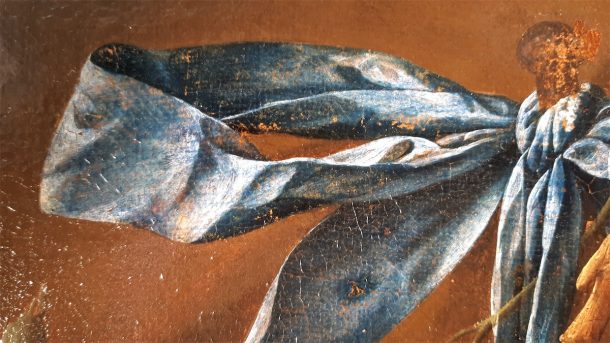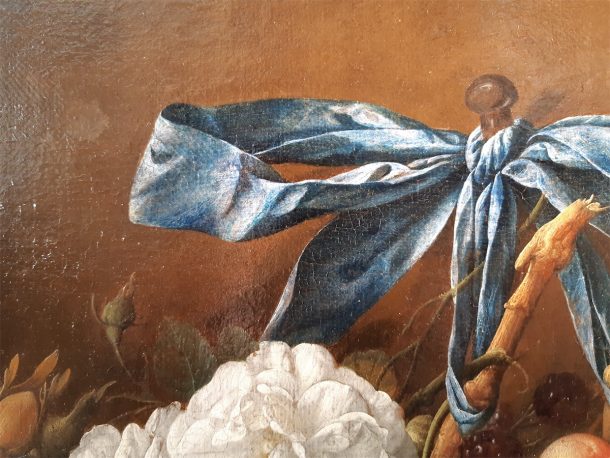In the final year of my conservation training at Queen’s University in Canada, I did a 3-month internship in paintings conservation at the V&A, where I prepared Cornelis de Heem’s 1662 oil painting, Fruit and Flowers, for display in the Silver Galleries. Digital reconstructions helped me to understand how the artist applied one of the oldest pigments on any artist’s palette – umber.
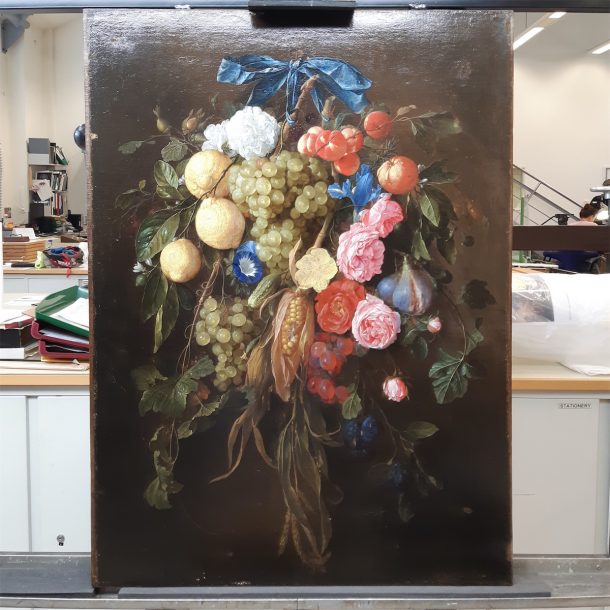
From the ocean floor to the painted surface, umber has been used throughout history as a pigment to make paint. The pigment is derived from sedimentary rocks containing iron oxides with varying amounts of manganese. Higher quality umbers contain more manganese, and have a greenish cast. When heated, umber becomes darker and reddish and is known as burnt umber as opposed to raw umber.
Like layered geological sediment, artists often apply paint in layers. The technique allows the underlying layers to alter the tonality of the upper paint layers. The resulting colour is often impossible to replicate with a single layer of paint. Cornelis de Heem used this layered technique to achieve translucencies and hyper-realistic painted effects – but over time surface abrasions revealed the painting’s underlying paint layers, thereby damaging the artist’s carefully created illusion. This was particularly evident in the background and the nail head.
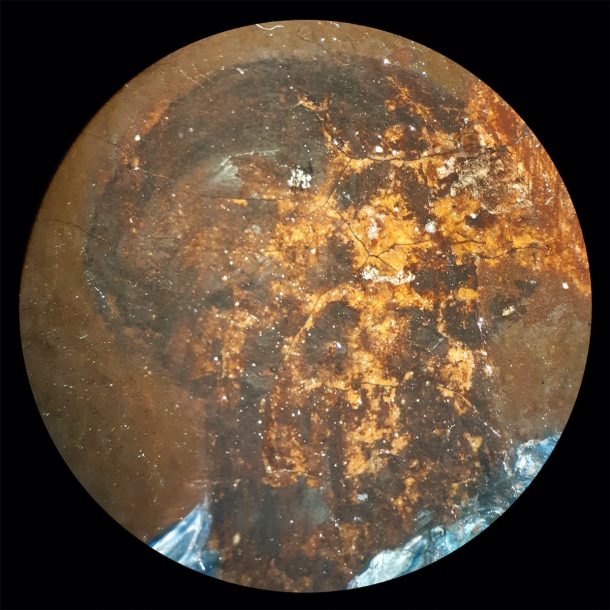
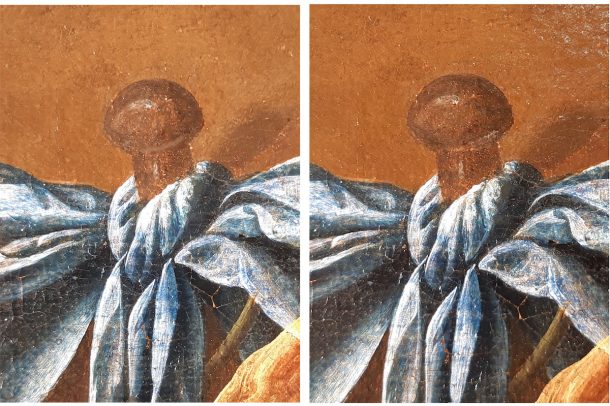
I used a reversible synthetic resin medium to re-integrate the losses. However, before touching paintbrush to painting, multiple digital reconstructions of the painting’s layered structure were produced using Adobe Photoshop and a digital tablet. The digital reconstructions were guided by careful examination under UV radiation and a stereomicroscope at over 400x magnification. In addition, I studied source images of similar artworks by the artist to further understand de Heem’s painting process.
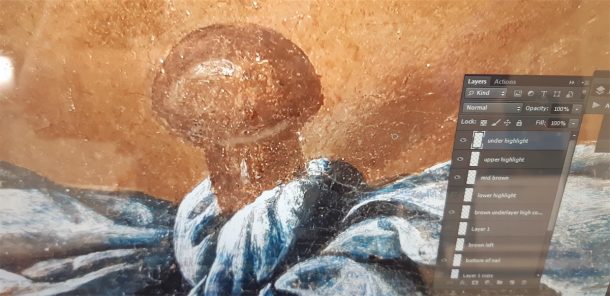
One of Photoshop’s strengths is its capacity to create separate digital layers that can be independently manipulated. This made Photoshop an ideal tool to reproduce the structure and transparencies of De Heem’s layered painting technique. To do so, I opened a photograph of Fruit and Flowers in Adobe Photoshop and magnified the areas of loss using the zoom tool. The colours surrounding the areas of loss were sampled using the eyedropper tool and gradually filled in using a digital paintbrush following the original paint stratification. This process revealed that De Heem likely applied a layer of burnt umber over the underlying ground layer, followed by a thin glaze of raw umber over the top. The warmer undertone shifted the greenish umber to create subtle visual depth in the deep brown background, only possible through multiple layers.

Creating digital reproductions allowed me to study the artist’s layered painting technique before applying any retouching medium to the painting. The original paint layers were quite abraded in places, and experimenting on the screen rather than the painting made it easier to decide how much of the abrasion to retouch, enabling a measured approach. Fruit and Flowers and its plethora of vegetation from various times of the year can now be enjoyed alongside other still life paintings in the Silver Galleries.
